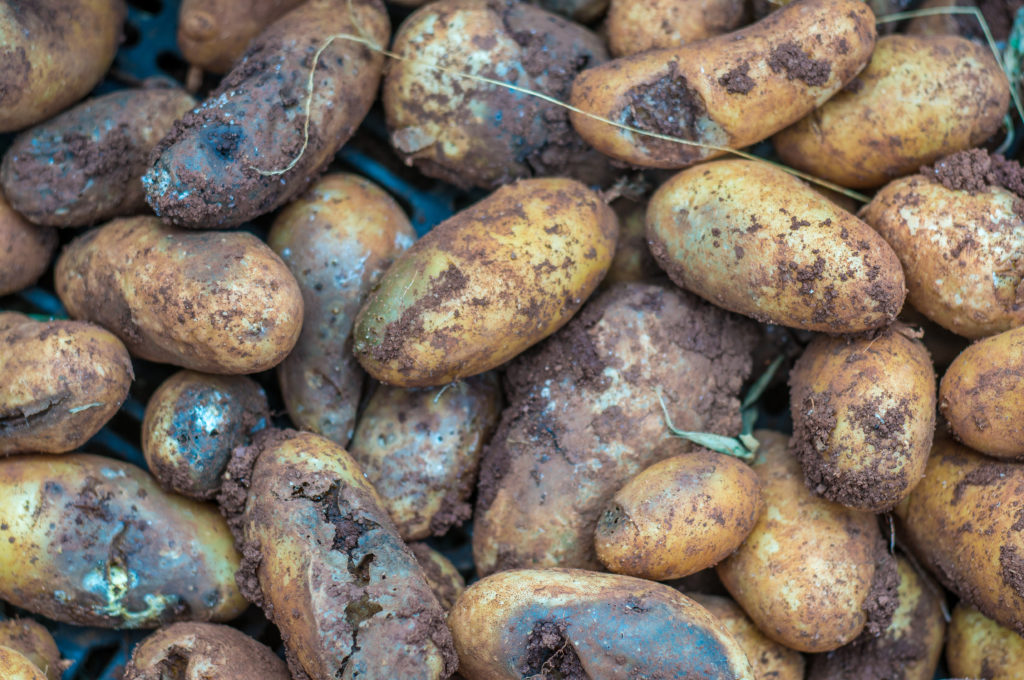
Gene editing could aid against potato oxidization, disease resistance
Since its introduction in 2015, CRISPR-Cas 9 has taken the scientific world by storm.
Gene editing has allowed potato breeders to tackle major production issues, such as drought tolerance and disease pressure, as well as quality-related issues like browning.
Two projects make clear the potential of the technology for the industry. The first project addresses the oxidization of potatoes, while the other uses the technology as an approach for broad disease resistance.
Broad-spectrum disease resistance
Research scientist Junqi Song is the principal investigator of a team that believes gene editing could hold the key to unlocking broad-spectrum disease resistance in staple crops, including potato. Song is a plant pathologist based at the Texas A&M AgriLife Research Center in Dallas. His team has been focusing on late blight disease in tomato and potato.
While much of the research being done in gene editing switches genes off, Song is using the more complicated “knock-in” approach. The knock-in approach, he explained, introduces a new system, which increases the plants’ existing defense responses as they come into contact with pathogens.
In the past, researchers have tried to control disease by over-expressing certain genes. But this often led to adverse effects, including yield and quality reduction.
“So the idea we are taking is first we are going to identify the master regulator,” Song said. “Second, we identified a pathogen-responsive regulatory element, so we put those two together and we use this regulatory element to drive the expression of the master regulator of the new regulators. So this way, the different response will be boosted upon pathogen infection.”
The process might sound complicated; the result, however, is not. Simply put, broad-spectrum disease resistance is enhanced.
Song and his team are working on another project. This one targets two genes and hopes to increase potato yield using gene-editing technology.
“Based on the literature, if you knock out some of the tuberization genes, the potato yield will likely be increased,” he said. “And those genes are often involved in the circadian clock and also flowering. We don’t really care if it flowers, we only care about the tubers.”
Because the yield project uses knockout technology, it’s relatively easy in comparison to the disease resistance project, which uses knock-in technology. It could, however, be two to three years before the project is complete. Right now, researchers aren’t certain about the impact on yields, but Song guesses that a 10- to 20-percent increase is possible.
“It could be more,” he said. “I’m not sure right now, but it’s an interesting project for us to test.”
Modifying genes to stop oxidization
A group of researchers from the National Institute of Agricultural Technology (INTA) in Argentina, led by Sergio Feingold, head of the Agrobiotechnology Lab at INTA-Balcarce, recently modified the polyphenol oxidase gene in potatoes. The gene is responsible for causing enzymatic browning in tubers, which means they turn black or brown when cut and exposed to air. Oxidization does not present any health concerns, but it does result in rejection by consumers and, therefore, industry.
As a result of this discovery, the Argentine researchers have been able to produce non-browning potatoes, as well as potatoes resistant to cold storage. This is not new, though. Simplot released two varieties — Innate Generation 1 and 2 — that offer similar benefits.
Generation 1 Innate potatoes are said to be less prone to bruising and black spots. They also produce less asparagine, which has the potential to reduce the formation of acrylamide by 58 to 72 percent.
Innate Generation 2 features similar traits, but also addresses the issues of shrinkage in cold storage, late blight, sugar ends and sprouting.
The difference, though, is in how they were produced, said Feingold, who pointed out the advantages of working with gene editing technology.
“There’s this common idea among countries — and I’m talking about the whole continent from Canada to Argentina and Chile — that if you can demonstrate that you have not inserted any foreign sequence in your product, it will not go under the same regulation as a GMO,” Feingold said. “It will go through the regulations of a normal variety that could have been obtained by classical breeding methods.”
“This is a very big advantage in the sense that you can easily introduce the products of these developments into the market because you don’t have this big, expensive and time-consuming wall of deregulating GMOs,” he said.
To aid in the smooth uptake of gene-edited products, like the non-oxidizing potato, the government of Argentina presented to the Committee on Sanitary and Phytosanitary Measures of the World Trade Organization, an “International Statement on Agricultural Applications of Precision Biotechnology.”
The submission, which was supported by Australia, Brazil, Canada, Paraguay and the United States, seeks to support science-based consideration of agricultural innovations. Feingold said he hopes that the submission will also encourage compatibility among countries, as well as minimize potential trade disruptions.
In the meantime, Feingold and his team at INTA are working to see if they can enhance water use efficiency and saline sensitivity in potato. The quality of water in Argentina is not the best, he said, which means they cannot grow more than one potato crop every four years. Addressing water use efficiency, he said, could reduce the crop’s use of energy, which could in turn help address climate change.







